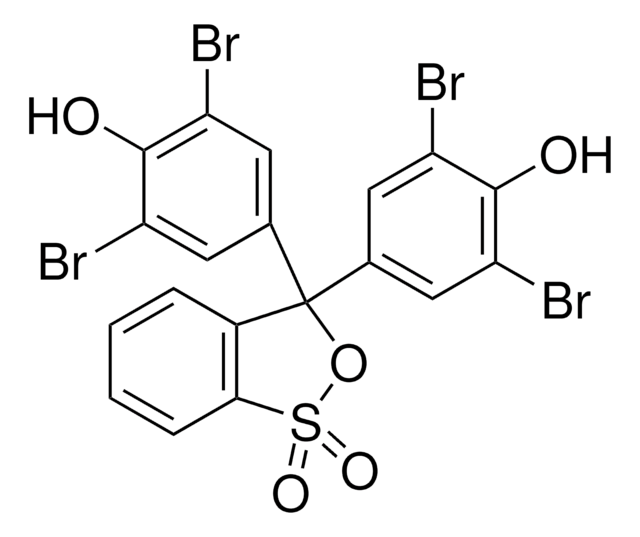32307
Lead(II) acetate trihydrate
puriss. p.a., ACS reagent, reag. ISO, reag. Ph. Eur., 99.5-102.0%
About This Item
Produits recommandés
Qualité
ACS reagent
puriss. p.a.
Agence
USP/NF
reag. ISO
reag. Ph. Eur.
Essai
99.5-102.0%
Forme
solid
Impuretés
≤0.005% insoluble in acetic acid
Pf
75 °C (dec.) (lit.)
Traces d'anions
chloride (Cl-): ≤5 mg/kg
nitrate (NO3-): ≤10 mg/kg
Traces de cations
Ca: ≤50 mg/kg
Cd: ≤5 mg/kg
Cu: ≤5 mg/kg
Fe: ≤10 mg/kg
K: ≤50 mg/kg
Mg: ≤50 mg/kg
Na: ≤50 mg/kg
Zn: ≤5 mg/kg
Chaîne SMILES
O.O.O.CC(=O)O[PbH2]OC(C)=O
InChI
1S/2C2H4O2.3H2O.Pb/c2*1-2(3)4;;;;/h2*1H3,(H,3,4);3*1H2;/q;;;;;+2/p-2
Clé InChI
MCEUZMYFCCOOQO-UHFFFAOYSA-L
Vous recherchez des produits similaires ? Visite Guide de comparaison des produits
Description générale
Application
Mention d'avertissement
Danger
Mentions de danger
Conseils de prudence
Classification des risques
Aquatic Acute 1 - Aquatic Chronic 1 - Carc. 2 - Eye Dam. 1 - Lact. - Repr. 1A - STOT RE 1
Organes cibles
Central nervous system,Blood,Immune system,Kidney
Code de la classe de stockage
6.1C - Combustible acute toxic Cat.3 / toxic compounds or compounds which causing chronic effects
Classe de danger pour l'eau (WGK)
WGK 3
Point d'éclair (°F)
Not applicable
Point d'éclair (°C)
Not applicable
Faites votre choix parmi les versions les plus récentes :
Déjà en possession de ce produit ?
Retrouvez la documentation relative aux produits que vous avez récemment achetés dans la Bibliothèque de documents.
Les clients ont également consulté
Notre équipe de scientifiques dispose d'une expérience dans tous les secteurs de la recherche, notamment en sciences de la vie, science des matériaux, synthèse chimique, chromatographie, analyse et dans de nombreux autres domaines..
Contacter notre Service technique











